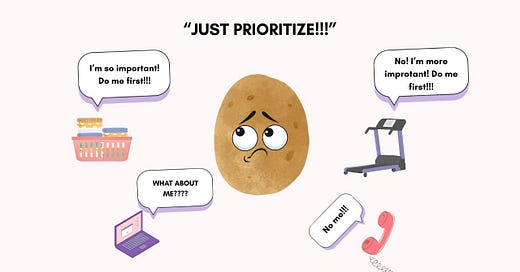How to prioritize with ADHD when everything feels equally important and urgent
AKA how to silence the eternal scream of “do everything now!”
If you’re looking for more ADHD support, join the waitlist for the Dopamine Den, a community for ADHDers to learn about effective ADHD strategies and systems, connect and body double with other ADHDe…
Keep reading with a 7-day free trial
Subscribe to The Dopamine Dispatch to keep reading this post and get 7 days of free access to the full post archives.



